The Social Cost of Carbon
I discuss some interesting facts about the modeling results, and remind people to sign up for my class on Energy Economics.
Jason Lisle on CNN
Jason Lisle, a PhD astrophysicist who now works for the Institute for Creation Research, appeared on CNN after Dr. Paul Broun Jr. (R-Georgia) got in trouble for saying the secular theory of evolution he learned in medical school was “lies straight from the pit of hell.” In this blog post, Lisle walks through how biased the CNN story was in its treatment. Needless to say, Lisle doesn’t view himself as advancing “faith” as opposed to “reason” or “science.”
Potpourri
==> David R. Henderson shines a critical spotlight on Krugman’s recent thoughts on “unproductive finance.”
==> Gerry O’Driscoll discusses inflation on the Larry Elder show. (HT2 the insightful von Pepe)
==> Julian Sanchez of the Cato Institute takes his colleagues to task for their support of the NSA’s eavesdropping.
==> Roger Koppl thinks Congress “should grow a pair” (and stand up to unelected bureaucrats in the national security State apparatus).
==> Alex Tabarrok explains that we are all felons.
==> Why aren’t there more libertarian women? Because they moved to India.
One Last Volley on the Keynesian Cross
Somebody emailed me the relevant section from Krugman/Wells on this stuff. Unfortunately it’s not a smoking gun; both sides will see what they want to see. Krugman walks through the original Keynesian logic of using the MPC to derive “the” multiplier (with math, not geometry). So someone who wants to bust him, would just look at that section.
However, Krugman does work in various points about crowding out, supply constraints, etc. in his broader framework of Aggregate Supply / Aggregate Demand, so someone who wants to defend him could point to those things.
I only taught intro to macro very rarely, and we were using a “free market” textbook by Gwartney et al. So in my teaching of this stuff, obviously the fallacy that Hazlitt/Rothbard/Landsburg identified, wasn’t there. But I can’t say whether modern students still get it, in the typical classroom. Nick Rowe kinda sorta thinks so.
Anyway, here’s my parting contribution to this discussion. Here’s Daniel responding to Nick Rowe:
All of [Nick Rowe’s] points are actually well taken, the problem is he makes those points as if it’s an either/or choice between AD/AS and the Keynesian cross. Of course it’s not. He also makes those points as if you don’t have a semester to clean up the Keynesian cross with other intuitions.
…[T]he Keynesian cross was nice to teach too because:
1. They could actually solve it – the math is trivial so you can take non-econ majors that are required to take it and they can work through it.
2. It reinforced the income-equals-expenditure point which is one of the critical differences between macro and micro and for that matter between macro and how people think generally, and
…
4. Contrary to what some people have been saying in this discussion, the Keynesian cross is the perfect time to teach about crowding out. Why? Because when you give them plausible numbers to plug in and have them solve you get stupidly high multipliers (and I’m talking about multipliers of four or five, not Landsburg’s multipliers). Then you show them a chart that Mark Zandi put together and ask “so why don’t we actually get multipliers that are that high? where can we see daylight between what the model says and what happens in the real world?”. My (limited) experience is that that tends to be a very fruitful discussion. [Bold added.]
Does everyone see what just happened here?
==> Landsburg said that the Keynesian Cross, as typically taught in Econ 101, rests on a silly fallacy. It uses simple math to give students the impression that there is a causal relationship between more government spending and more national income, when that doesn’t at all follow from the accounting identity.
==> Daniel comes back and says he thinks the Keynesian Cross is still good to use in class. He admits that it’s based on simple math, it reinforces the idea that spending equals income, and because using it literally as a model gives you totally wrong outcomes, it’s an excellent pedagogical device to show why the Keynesian Cross by itself must be supplemented with other things (like crowding out). Indeed, you need to spend future lectures during the semester to “clean up” (Daniel’s words) the false intuitions one might have gotten just from studying the Keynesian Cross.
In light of the above, one might have expected Daniel to originally write a post, “Landsburg makes some good points on the Keynesian Cross, but I regret nothing!” Instead he titled his original response, “As misleading as comparing penetration by a rapist to penetration by photons but (mercifully) less offensive.”
I know I do it too, but it’s really funny when you step back and look at how much the economics bloggers actually agree with each other, but since we’re on different teams, we flip out and accuse the other side of perfidy and stupidity. (And yes, as someone in the comments mentioned, to see Krugman complaining that people are saying he’s stupid, and not giving him the respect he deserves, is breathtaking, given his routine treatment of even other Nobel laureates who think the government deficit is a problem.)
Join Me in “Adventures in Energy Economics”
Today at Mises.org I have an infomercial for my class, starting this coming Tuesday, on energy economics. The main description:
The weekly lectures will run from July 2 through July 30. The first week will address the question, “Will we run out of energy?” We will cover the standard mainstream treatment (based on the classic article by Harold Hotelling) and then see the weakness in this perspective, because it fails to account for the role of entrepreneurship. To see the “optimistic” Austrian take, we will cover selections from Julian Simon and Robert Bradley, arguably the world’s leading Austrian expert on energy economics, who chose Murray Rothbard to oversee his dissertation on the U.S. experience with oil and gas regulation.
In week two we will cover the libertarian property rights framework of environmental issues as laid out in the classic article by Murray Rothbard. We will also mention some of Walter Block’s contributions in this area. Contrary to popular belief, “free market environmentalism” is not a contradiction in terms. In fact, the worst ecological basket cases in history occurred under strong centralized States.
In the third and fourth weeks we will focus on my specialty (which I have developed over the past 6 years in my role as Senior Economist at the Institute for Energy Research), which is the economics of climate change. We’ll first get a broad overview of the physical science, but then focus on the economic issues involved, such as the role of the discount rate, the nature of the (alleged) damage estimates, and a comparison of a carbon tax versus a “cap and trade” approach. As always in my Academy classes, we will cover the conventional textbook approach, before listing criticisms of the typical case for a penalty on carbon to correct the “negative externality” of greenhouse gas emissions.
Finally, in the fifth week we will put the theory aside and discuss the real-world policy debates on energy issues, as I have testified before Congress and toured several states during a “bus tour for affordable energy.” After slogging through some of the technical details in previous weeks, this lecture will consist of fun anecdotes, including my (subtle) attempt to push Dennis Kucinich to end the Fed.
It’s a steal at $59. Sign up here.
Klever Krugman Responds to Landsburg’s Klaimed Karicature
No doubt inspired by my trademarked “Krugman Kontradiction,” my favorite blogger has a response to Landsburg entitled “Karicature Keynesianism.” It is quite clever; let me show you why. Krugman writes:
[L]et me note that Landsburg’s latest unfortunate intervention follows a well-trodden path: that of starting from the proposition that Keynesians are themselves really, really stupid — a proposition argued not by pointing to anything actual Keynesians say, but instead by presenting a caricature that supposedly is what Keynesians believe. Call it Karicature Keynesianism.
Anyone who’s followed the various attacks on yours truly knows what I mean: Keynesians believe that budget deficits never matter, that increasing demand can solve all economic problems, that there’s no such thing as a supply side to the economy, that more spending is always good. You can see it even in the comments to Kuehn’s post, with people expressing doubt about whether there’s crowding out in my textbook. Let me suggest a very difficult research project: how about actually looking at the book?
…
By the way, the man who really brought Keynesianism into the classroom — who was responsible for what we now call the “Keynesian cross” — was Paul Samuelson. And while arguing from the qualities of individuals isn’t the main way you should assess anything, still: maybe you think I’m stupid (a remarkable number of people apparently do believe that), but do you really imagine that Paul Samuelson was an idiot promoting a moronic set of ideas?
Do you see how neat this is? Krugman decided to illustrate his complaint by doing to Landsburg exactly what Krugman claims Landsburg did to Krugman. Specifically: Landsburg never claimed any of the following in his post:
(a) Krugman has no discussion of crowding out in his textbook.
(b) Krugman is stupid.
(c) Keynesianism is stupid.
(d) Samuelson is an idiot.
(e) Samuelson promoted a moronic set of ideas.
Instead, Landsburg claimed that the textbook, Econ 101 use of the Keynesian Cross to deduce a multiplier for government spending, is based on a fallacy.
In order to refute that, Krugman should point out in Samuelson and/or Krugman/Wells the passage in this discussion showing that he evades Landsburg’s fallacy.
Since Krugman resorts to pouting and invents attacks on himself that Landsburg never launched, Steve should be flattered at the admission that he hit pay dirt.
(At the office tomorrow I’ll look through Samuelson and Krugman/Wells to see what we shall see. I have to do the work Krugman refuses to do.)
The Cross Keynesian
Steve Landsburg took on the Keynesian Cross (and its case for the government multiplier) and Daniel Kuehn is none too happy. Daniel lists all sorts of reasons that the Keynesian textbook case isn’t as simplistic as Landsburg makes out. For example, any decent Econ 101 student (according to Daniel) realizes that there should be time subscripts for these variables, and that government spending will be influenced by supply side constraints / crowding out.
So: Can someone go look up the discussion of this in both Samuelson and Krugman/Wells? I am quite sure none of Daniel’s nuances are in the former, but they might be in the latter. (Yet even if they are in the latter, the form would have to be: “We just used this diagram to talk about the multiplier, but actually, everything we just said is bogus, because of the following complications…”)
It’s Easy to Be Right When You Don’t Admit You Were Wrong
I’m going to be laying into my two favorite bloggers–Paul Krugman and Scott Sumner–for their slippery handling of the recent rise in Treasury yields. As I’ve said several times on this blog, I think Krugman and Scott do this a lot (Krugman is more annoying about it); it’s just that this is a particularly obvious example. However, I don’t want to give the impression that everybody I fight with on this blog, does the same thing. So in the interest of balance, let me officially thank Tyler Cowen for admitting there is a problem, and (dare I say it?) Brad DeLong for being so good about listing ways he botched things in the past.
OK on to the fun stuff:
==> For years, Krugman has been saying that people like the Austrians are wrong for blaming “artificially” low interest rates on Bernanke’s “aggressive” policies. For example, when Bill Gross of PIMCO thought the end of QE2 buying would lead to a spike in Treasury yields, Krugman took him out to the woodshed numerous times, and also said that anybody who invested based on Gross’s views lost a lot of money. (E.g. look here and here.) As usual with Krugman, this wasn’t just a feeling in his belly; he was saying he (Krugman) had a buttoned-down model to explain his views, whereas Gross couldn’t even come up with a good theory to explain his position.
==> For his part, Scott Sumner has also taken me specifically to the woodshed for thinking the Fed is holding down Treasury yields.
==> In that context, the following chart from Justin Wolfers is a bit problematic for my confident blogging friends:
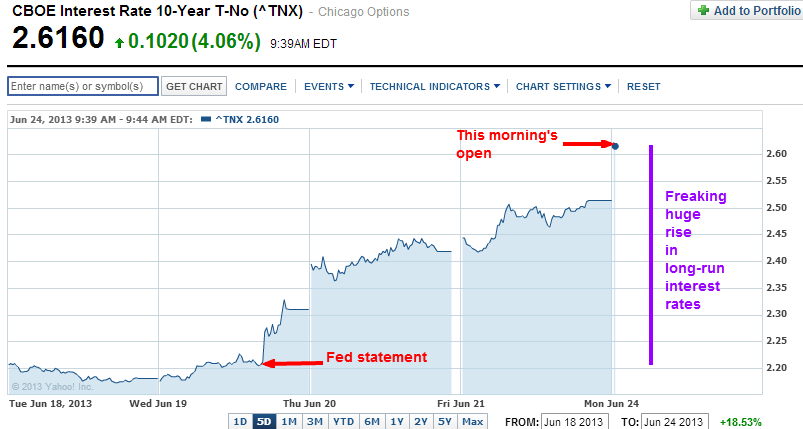
OK, that looks sorta consistent with the perspective coming from my blog and other Austrian-friendly sources, right? Doesn’t mean we have a monopoly on truth, but it sure means that Krugman and Sumner need to either (a) ignore this completely or (b) when commenting on it, do so with some humility and explain why it totally contradicts what they’ve been telling people for years.
In this essay about the Fed’s recent policy shift, Krugman continues with his woe-is-me-I-hate-being-Cassandra narrative. You wouldn’t get even a hint that maybe something is a bit odd here, and that the response to the Fed announcement–according to Krugman’s own explanation of how to interpret swings in stock and bond prices–means the Fed’s buying has been holding down Treasury yields.
(Subtle point made in the interest of fairness: There is a difference between QE2 winding down according to schedule, versus a surprise announcement of a change in the wind-down date of QE3. However, Krugman has in the past gone further than merely criticizing Bill Gross’ specific call; Krugman has more generally said that the Peter Schiff-types are wrong for thinking low interest rates are “artificial” and caused by Bernanke, as opposed to the economic slump.)
Now if Krugman is a bit slippery, Scott Sumner is jaw-dropping in his audacity. In response to Arnold Kling saying the past two weeks present a bit of a problem, Scott writes:
The correlation between nominal interest rates and NGDP (or RGDP) growth is overwhelming positive. Nothing that happened this week contradicts that. Indeed nothing that happened this week contradicts what I’ve been saying for the past 4 1/2 years…
So what have we learned this week? To me this is one data point, indicating tight money is slightly more likely to raise long term rates than I had previously assumed….
PS. The fact that Krugman, Cowen, Kling, myself and many others were surprised by the surge in rates over the past few weeks actually speaks well of our understanding of macro. It shows that we’ve been paying attention, that rates don’t usually behave this way. As for those who “got it right,” you have some “splaining to do” about the surging yields in Japan in response to more QE. [Bold added.]
By all means, go read him in full context to see if I’m distorting his meaning.
Or how about this? Gavyn Davies was complaining in an FT article that the recent jump in interest rates showed that the Fed’s exit (from QE) may be more difficult than we had been led to believe. After all, if just tweaking announcements about the end of the program caused 10-year yields to rise that much, what happens when Bernanke says, “We’re letting our portfolio go back to pre-recession levels”? (That’s my question, not necessarily Davies’ spin.) Davies brought up an historical precedent for his worries:
[A] previous big Fed exit, announced on February 4, 1994, was even more dramatic. It was a day that triggered such turbulence that it is etched in the memory of all bond traders. Working as a Goldman Sachs economist, I was on the bond trading floor when the Fed released an innocuous-sounding statement. The FOMC had decided “to increase slightly the degree of pressure on reserve positions . . . which is expected to be associated with a small increase in short-term money- market interest rates”. Pardon? After a few moments, there was an explosion of noise as realisation set in.
The market was unprepared for the Fed change, Investors were over-leveraged and knee-deep in Mexican debt and mortgages. Equities emerged relatively unscathed. But before the bloodbath ended that November, the survival of the US investment banks was at stake.
Here’s what Scott said in response:
The tipoff is the “equities emerged relatively unscathed” remark. I’ve been around for 58 years and can’t recall a more boring and uneventful year than 1994. That means Fed policy was working. Boring is good! Yes, there was some turmoil in the bond market, but bond markets don’t matter, what matters is NGDP. And that was fine.
The sooner we remove finance from monetary economics the better. All it does is lead to fuzzy thinking, as we also saw in my previous post. [Bold added.]
I’m not offering these quotes to blow up market monetarism. What I’m asking is that my really sharp free-market colleagues who have sided with Sumner over the Rothbardians on this stuff, step back and really think hard about how flippant Scott is being. Are we really willing to throw out microeconomics so much, that “bond markets don’t matter”? Is it really true that the Fed buying trillions of dollars of government debt, hasn’t seriously screwed up the economy in ways that have not yet fully shown their awful consequences?
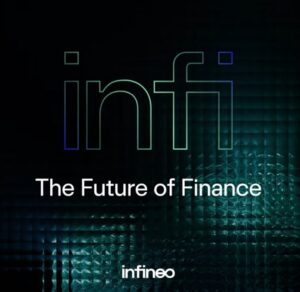
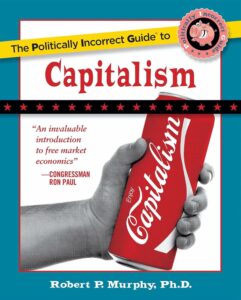
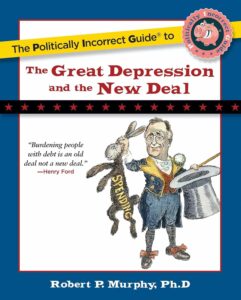
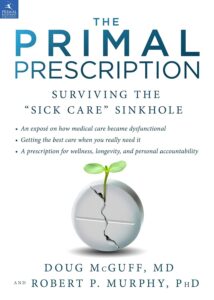
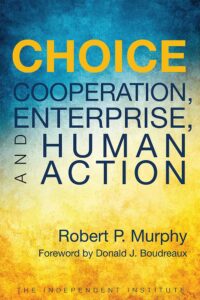
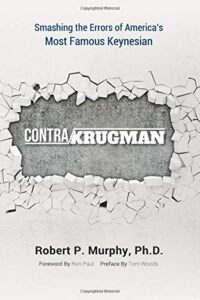
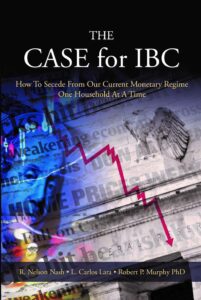
Recent Comments